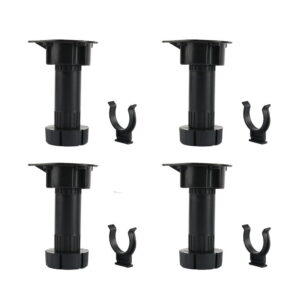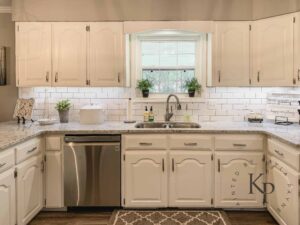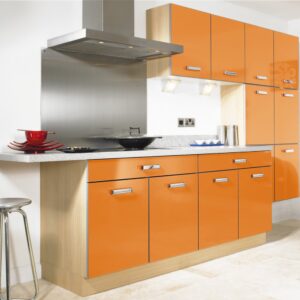When it comes to kitchen renovations, one of the most impactful and transformative changes you can make is adding new cabinets. Not only do kitchen cabinets provide essential storage space, but they also play a crucial role in defining the overall look and feel of your kitchen. Whether you’re looking to upgrade your existing cabinets or starting from scratch, this article will guide you through the process of adding kitchen cabinets, from planning to installation.
1. Assessing Your Needs
Before embarking on any kitchen renovation project, it’s important to assess your needs and determine what you hope to achieve with the addition of new cabinets. Ask yourself the following questions:
- How much storage space do I need?
- What type of items will I be storing in the cabinets?
- What is my budget for the project?
- What style and design do I prefer?
By answering these questions, you’ll have a clearer understanding of your requirements and preferences, which will guide you in the decision-making process.
2. Planning and Design
Once you’ve assessed your needs, it’s time to start planning and designing your new kitchen cabinets. This step involves several key considerations:
- Layout: Determine the optimal layout for your kitchen cabinets, taking into account factors such as the size and shape of your kitchen, the location of appliances, and the flow of traffic.
- Style: Choose a style that complements the overall design of your kitchen. Whether you prefer a modern, traditional, or transitional look, there are countless options to suit every taste.
- Materials: Select the materials for your cabinets based on durability, aesthetics, and budget. Popular choices include wood, laminate, and metal.
- Colors and Finishes: Decide on the color scheme and finish that best aligns with your vision. Consider factors such as natural light, existing cabinetry, and the overall ambiance you wish to create.
During the planning and design phase, it’s also essential to take accurate measurements of your kitchen space to ensure a seamless fit for your new cabinets. This will prevent any surprises during the installation process.
3. Budgeting and Cost Considerations
Adding kitchen cabinets can be a significant investment, so it’s crucial to establish a budget and consider the associated costs. The cost of cabinets can vary widely depending on factors such as materials, style, size, and customization options. Additionally, you’ll need to account for installation costs, hardware, and any additional features you may want, such as built-in organizers or lighting.
To maximize your budget, consider the following strategies:
- Research: Compare prices from different suppliers and retailers to find the best deals. Don’t forget to check online sources, as they often offer competitive prices.
- Refacing or Refinishing: If your existing cabinets are in good condition, consider refacing or refinishing them instead of replacing them entirely. This is a cost-effective option that can give your kitchen a fresh new look.
- DIY vs. Professional Installation: Depending on your skills and experience, you may choose to install the cabinets yourself or hire a professional. While DIY installation can save you money, professional installation ensures a seamless and professional finish.
By carefully considering your budget and exploring cost-saving options, you can add beautiful and functional kitchen cabinets without breaking the bank.
4. Selecting a Supplier
Choosing the right supplier for your kitchen cabinets is crucial to ensure quality, durability, and a smooth buying experience. When selecting a supplier, consider the following factors:
- Reputation and Reviews: Research the supplier’s reputation and read customer reviews to gauge their reliability and customer satisfaction levels.
- Product Range: Look for a supplier that offers a wide variety of cabinet styles, materials, and finishes. This will give you greater flexibility in finding the perfect cabinets for your kitchen.
- Quality: Examine the quality of the cabinets by visiting showrooms, viewing samples, or requesting product specifications. Quality construction ensures longevity and functionality.
- Warranty: Check if the supplier offers a warranty on their cabinets. This will provide peace of mind knowing that you’re covered in case of any defects or issues.
Take your time to research and compare different suppliers to find the one that best meets your needs and offers a good balance of quality and affordability.
5. Installation Process
Once you have selected your cabinets and finalized the design, it’s time to move on to the installation process. While hiring a professional is recommended for a seamless and efficient installation, if you have the necessary skills and experience, you may choose to install the cabinets yourself. Here are some key steps to consider:
- Prepare the Space: Clear out your kitchen and remove any existing cabinets or appliances that may hinder the installation process.
- Follow the Instructions: Read and follow the manufacturer’s instructions carefully. Each cabinet may have specific installation requirements.
- Start with the Base Cabinets: Begin by installing the base cabinets, ensuring they are level and securely fastened to the wall and floor.
- Install Upper Cabinets: Once the base cabinets are in place, proceed to install the upper cabinets, making sure they are level and properly aligned.
- Secure and Finish: Secure all cabinets together, install hardware, and add finishing touches such as trim or molding.
If you decide to hire a professional installer, make sure to communicate your expectations clearly and establish a timeline for the project. A skilled installer will ensure a precise and efficient installation, saving you time and potential headaches.
Conclusion
Adding kitchen cabinets can have a tremendous impact on both the functionality and aesthetics of your kitchen. By carefully assessing your needs, planning and designing, budgeting, selecting a reputable supplier, and following a proper installation process, you can create a kitchen that not only meets your storage requirements but also reflects your personal style.
FAQs – Frequently Asked Questions
1. How long does it take to add kitchen cabinets?
The duration of adding kitchen cabinets depends on various factors, including the size of your kitchen, the complexity of the design, and whether you choose professional installation or DIY. Generally, it can take anywhere from a few days to a few weeks to complete the project.
2. Can I add cabinets to my existing kitchen layout?
Absolutely! Adding cabinets to an existing kitchen layout is a common practice. However, it’s important to ensure that the new cabinets blend seamlessly with the existing ones in terms of style, color, and finish.
3. How much does it cost to add kitchen cabinets?
The cost of adding kitchen cabinets can vary significantly depending on factors such as materials, size, customization, and installation. On average, you can expect to spend between $5,000 and $15,000 for a standard kitchen cabinet installation.
4. Can I install kitchen cabinets myself?
If you have the necessary skills, experience, and tools, you can install kitchen cabinets yourself. However, keep in mind that professional installation ensures a precise and efficient finish, especially when dealing with complex designs or customizations.
5. Can I change the layout of my kitchen when adding cabinets?
Adding new cabinets provides an excellent opportunity to reconfigure your kitchen layout. However, significant changes to the layout may require the expertise of a professional designer or contractor to ensure structural integrity and functionality.
Summary
Adding kitchen cabinets is a transformative process that enhances both the functionality and aesthetics of your kitchen. By carefully assessing your needs, planning and designing, budgeting, selecting a reputable supplier, and following a proper installation process, you can achieve the kitchen of your dreams. Remember to consider your budget, explore cost-saving options, and seek professional help when needed. Whether you’re looking for additional storage or a fresh new look, adding kitchen cabinets is a worthwhile investment that will elevate your culinary space.





